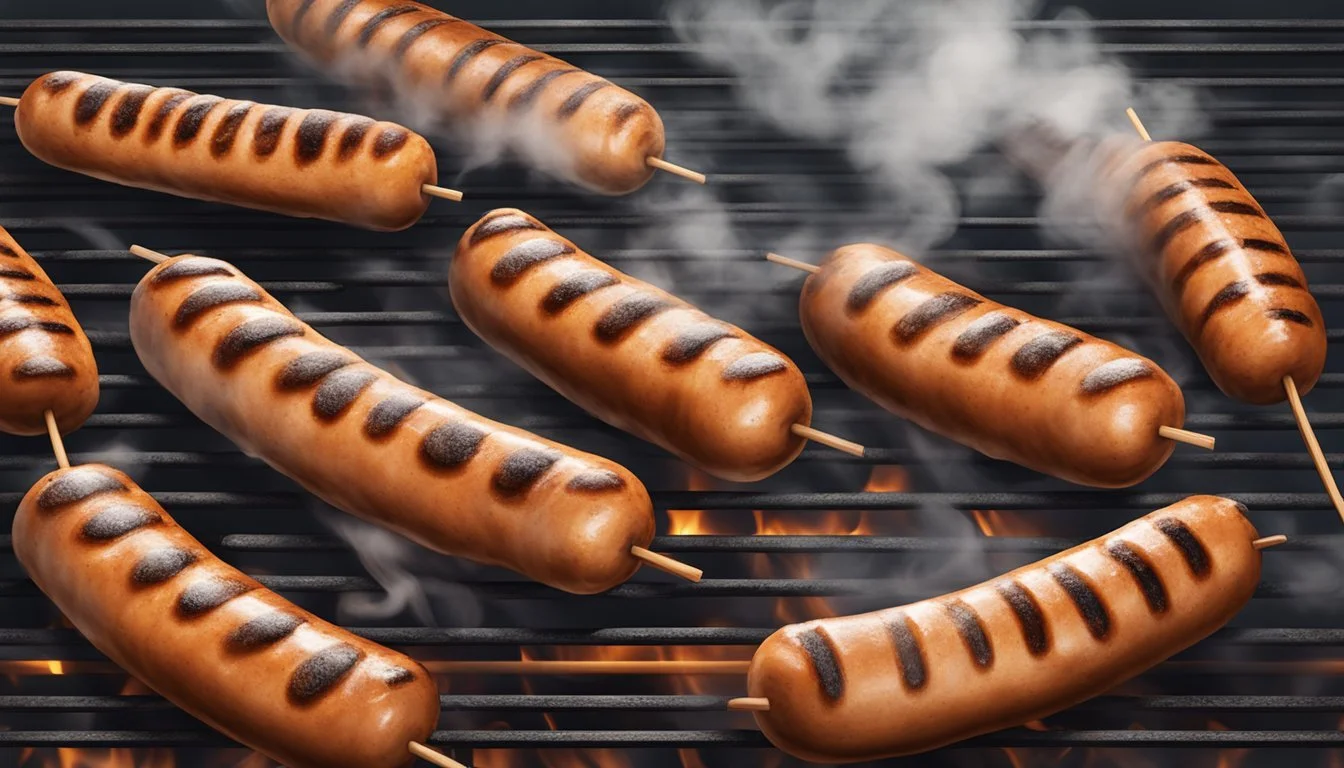BBQ Smoked Sausage
A Guide to Perfectly Smoky Flavors
BBQ smoked sausage is a beloved classic within the barbecue (What wine goes well with barbecue?) repertoire, celebrated for its deep, rich smoky flavor that complements a variety of dishes. The process of smoking sausage combines the low and slow essence of traditional barbecue with the savory taste of seasoned meat. Whether served as sausage links or sliced into sausage bites coated in made-from-scratch BBQ sauce, the versatility and robust taste of smoked sausage make it a crowd favorite at cookouts and family gatherings.
The secret to crafting the perfect BBQ smoked sausage lies in both the choice of meat and the smoking technique. Different woods impart subtle nuanced flavors to the sausage, with hickory, mesquite, and applewood being popular choices among pitmasters. The smoking process, whether hot smoking to fully cook the sausage or cold smoking to infuse flavor for further cooking, plays a crucial role in achieving the desired smoky taste.
In achieving the hallmark smoky flavor, it's not just about the wood or the smoke; the blend of spices, the type of sausage, type of barbecue sauce, and the precise control of the cooking temperature all contribute to the perfect sausage recipe. The intricacy of this culinary method brings out the depth of flavor that is both intricate and satisfying, ensuring BBQ smoked sausage remains a staple in the world of barbecue.
Preparing BBQ Smoked Sausage
Preparing BBQ smoked sausage encompasses selecting quality meats, preparing a flavorful seasoning blend, and choosing the right equipment and wood for smoking. Proper preparation leads to a savory and delightful culinary experience.
Selecting the Right Sausage
When choosing sausages for BBQ smoking, consider the meat type and flavor. Pork sausages (What wine goes well with pork sausages?) are traditional, offering a rich taste and succulent fat content. Beef sausages provide a hearty flavor, while turkey and chicken sausages are leaner alternatives. For bolder, spicier options, chorizo or Italian sausages are ideal. Those looking for a smokier, garlicky flavor might opt for kielbasa or Polish sausages. Both homemade and store-bought sausage can be used; if buying, ensure high quality and minimal processing for the best results.
Ingredients and Seasoning
The seasoning for smoked sausage should complement the meat’s natural flavors. A basic blend might include:
Salt (such as kosher salt (how long does kosher salt last?) for its pure flavor)
Ground black pepper
Additional spices like paprika, cayenne pepper, garlic powder, (how long does garlic powder last?) or red pepper flakes (how long do red pepper flakes last?) for heat
Combine these ingredients in proportions that suit your taste. For added sweetness, a touch of sugar can be included. Those who prefer a wet seasoning can baste the sausages with BBQ or barbecue sauce during the latter stages of smoking.
Smoking Equipment and Wood Choices
The choice of smoker is pivotal in the smoking process. Options include:
Charcoal Smokers
Charcoal smokers are prized for their ability to impart a deep, rich smoky flavor to meats and other foods. This type of smoker is often favored by barbecue enthusiasts who appreciate the traditional taste that comes from the charcoal smoking process.
Electric smokers offer a more user-friendly experience, as they allow for precise temperature control with less effort. This convenience makes it possible to maintain a consistent smoking environment, which can be particularly beneficial for those new to smoking foods.
Gas smokers provide the convenience of easy start-up and consistent heat, making them a practical choice for many. However, some purists argue that they may not deliver the same intensity of flavor that is characteristic of charcoal or wood-fired smoking methods.
For a balanced taste, hickory is a popular choice. For more subtlety, apple or cherry woods are excellent. Wood chips are ideal for shorter smoking times, while wood pellets provide a longer-lasting smoke.
The smoking process generally involves preheating the smoker to a specified temperature and placing the sausages on racks without them touching. Cooking times vary based on sausage thickness and smoker stability.
Cooking and Serving
BBQ smoked sausage is a flavorful crowd-pleaser, ideal for gatherings or a family dinner. Mastering a few techniques ensures perfectly cooked sausage, while proper presentation and storage can enhance the dining experience.
Smoking and Cooking Techniques
Smoking sausages require attention to cooking time, smoking temperature, and ensuring sausages reach the proper internal temperature. For hot smoking, sausages like beef smoked sausage or chicken sausages are usually smoked at temperatures between 225°F and 250°F until an internal temperature of 160°F is reached, which can take approximately 1 to 3 hours depending on size and thickness.
Grilling: To sear smoked sausage, use high heat for a minute or two on each side until caramelized, then move to a cooler part of the grill to finish cooking.
Total time: The entire process, from curing to serving, can range but tends to remain consistent once familiarized with the sausage types and smoking temperatures.
Presentation and Accompaniments
The visual appeal and pairing of BBQ smoked sausage significantly impact the eating experience. Serve as an appetizer sliced on a platter with vibrant bell pepper, onions, and a variety of sauces, or plate as a main with hearty sides for a complete meal offering multiple servings.
Texture and Flavor: Grill marks from searing add to the texture, while the accompanying vegetables can provide color, vitamins, and fiber.
Nutritional Information: Smoked sausage contains calories, sodium, iron, vitamin A, vitamin C, calcium, potassium, and cholesterol levels, which vary by sausage type.
Storing and Reheating
Leftover smoked sausage should be stored effectively to maintain its quality. Refrigerate or vacuum seal in aluminum foil or airtight containers to extend freshness.
Refrigerator Storage: Properly stored, leftover smoked sausage can last 3-4 days in the refrigerator.
Reheating: For best results, reheat sausages slowly in a pan over medium heat. Alternatively, use a microwave with a damp paper towel to keep the sausage moist.




